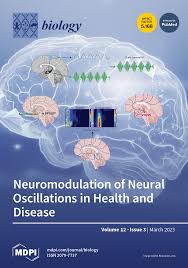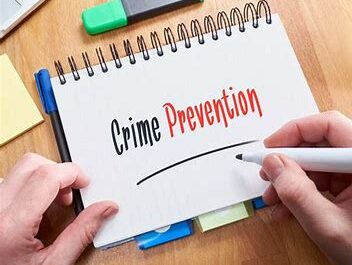Introduction

Crime is a multifaceted phenomenon with roots in various disciplines, including biology and psychology. Understanding the interplay between these two domains provides valuable insights into the etiology and manifestation of criminal behavior. This essay explores how biological factors, such as genetics and brain structure, interact with psychological factors, including personality traits and cognitive processes, to influence criminal behavior.
Biological Influences on Crime:
-
Genetics:
- Genetic predispositions play a significant role in criminal behavior. Studies have shown that certain genetic variations are associated with an increased risk of engaging in criminal activities.
- For instance, research on twin and adoption studies suggests that genes contribute to antisocial behaviors, such as aggression and impulsivity, which are often linked to criminal conduct.
- Additionally, variations in genes related to neurotransmitter function, such as dopamine and serotonin, can influence an individual’s propensity for risk-taking and sensation-seeking behaviors, both of which are associated with criminality.
-
Brain Structure and Function:
-

- The structure and function of the brain also contribute to criminal behavior. Neuroimaging studies have identified differences in brain regions implicated in decision-making, impulse control, and emotional regulation among individuals who engage in criminal activities.
- For example, abnormalities in the prefrontal cortex, which is involved in executive functions and self-regulation, have been observed in individuals with a history of violent behavior.
- Furthermore, imbalances in neurotransmitter systems, such as the serotonin system, have been linked to impulsive and aggressive behaviors, which are common precursors to criminal acts.
Psychological Influences on Crime:
-
Personality Traits:
- Certain personality traits are associated with an increased likelihood of criminal behavior. For instance, individuals high in traits such as psychopathy, narcissism, and impulsivity are more prone to engage in criminal activities.
- Psychopathy, characterized by a lack of empathy and remorse, is particularly relevant to understanding violent and predatory crimes.
- Moreover, individuals with antisocial personality disorder often exhibit a disregard for social norms and the rights of others, making them more likely to engage in criminal behavior.
-
Cognitive Processes:
-

- Cognitive factors, including decision-making processes and problem-solving skills, influence an individual’s propensity for crime.
- Deficits in cognitive functioning, such as poor impulse control and difficulty weighing the consequences of actions, can contribute to impulsive and reckless behavior that leads to criminal acts.
- Cognitive biases, such as distorted perceptions of risk and reward, may also contribute to criminal decision-making by skewing individuals’ judgments and priorities.
Interaction between Biology and Psychology in Crime:
-
Gene-Environment Interactions:
- The interaction between genetic predispositions and environmental factors significantly influences the expression of criminal behavior.
- For example, individuals with genetic vulnerabilities, such as a genetic predisposition to aggression, may be more susceptible to environmental stressors, such as childhood trauma or socioeconomic disadvantage, which can exacerbate their risk for criminality.
- Conversely, protective factors, such as supportive family environments and access to education and resources, can mitigate the impact of genetic risk factors on criminal behavior.
-
Developmental Pathways:
-
 The interplay between biological and psychological factors shapes developmental pathways that predispose individuals to criminal behavior.
The interplay between biological and psychological factors shapes developmental pathways that predispose individuals to criminal behavior.- Early childhood experiences, including attachment patterns, exposure to violence, and parenting styles, interact with genetic predispositions to influence the development of antisocial behaviors.
- For instance, children with a combination of genetic vulnerabilities and adverse environmental experiences are at heightened risk for developing conduct problems and delinquency later in life.
Implications for Intervention and Prevention:
-
Integrated Approaches:
- Effective interventions and prevention strategies should recognize the complex interplay between biological and psychological factors in shaping criminal behavior.
- Integrated approaches that address both genetic vulnerabilities and psychosocial risk factors are essential for reducing the prevalence of crime and promoting rehabilitation.
- Interventions may include targeted psychological therapies, cognitive-behavioral interventions, and pharmacological treatments that address underlying biological mechanisms implicated in criminal behavior.
-
Early Identification and Intervention:
- Early identification of individuals at risk for criminal behavior is critical for implementing timely interventions and mitigating adverse outcomes.
- Screening programs that assess genetic, biological, and psychosocial risk factors can identify vulnerable individuals and provide tailored interventions to address their specific needs.
- Early intervention programs aimed at enhancing parenting skills, promoting socioemotional development, and addressing cognitive deficits can prevent the escalation of antisocial behaviors and reduce the likelihood of future criminality.
-
Biological Factors
- : Genetics: One of the fundamental biological factors influencing criminal behavior is genetics. Research suggests that genetic predispositions play a significant role in predisposing individuals to certain types of criminal behavior. Studies examining the heritability of criminality have found that genetic factors can account for a substantial portion of the variance in criminal behavior. Twin and adoption studies have provided compelling evidence for the heritability of traits associated with criminality, such as impulsivity, aggression, and antisocial behavior.
Neurobiology
- : The brain serves as the command center for human behavior, and aberrations in brain structure and function can contribute to criminal behavior. Neurobiological research has identified differences in brain anatomy and functioning between individuals who engage in criminal behavior and those who do not. For example, abnormalities in the prefrontal cortex, which is responsible for impulse control and decision-making, have been associated with increased impulsivity and aggression, both of which are risk factors for criminal behavior.
Biochemical Imbalances

- : Imbalances in neurotransmitters, such as serotonin, dopamine, and norepinephrine, have been implicated in various forms of criminal behavior. For instance, low levels of serotonin have been linked to impulsivity and aggression, while abnormalities in dopamine functioning have been associated with sensation-seeking behavior and addiction. These biochemical imbalances can influence an individual’s susceptibility to engaging in criminal acts, particularly those related to substance abuse and violence
-
Socioeconomic Factors
- : Socioeconomic disadvantage is strongly correlated with higher rates of criminal involvement. Economic deprivation, lack of access to educational and employment opportunities, and neighborhood disorganization contribute to the social and economic marginalization of individuals and communities, increasing their vulnerability to engaging in criminal behavior as a means of survival or social mobility. The cycle of poverty and crime perpetuates across generations, exacerbating social inequalities.
Conclusion
: Understanding the intricate interplay between biology and psychology is essential for comprehensively addressing the complex phenomenon of crime. Biological factors, including genetics and brain structure, interact with psychological factors, such as personality traits and cognitive processes, to shape an individual’s propensity for criminal behavior. Recognizing these interactions informs the development of effective interventions and prevention strategies aimed at reducing crime and promoting rehabilitation within society. By integrating insights from biology and psychology, we can foster a deeper understanding of criminal behavior and work towards creating safer and more resilient communities.



